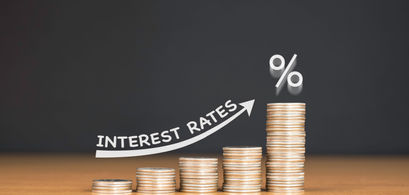The term coupon refers to the interest rate appearing on a debt instrument, stated in terms of an annual percentage rate. Historically, a physical coupon was used by the holder to collect the periodic interest payments on a bond.
Coupon Rate (%) = (Sum of Annual Coupon Payments / Par Value of Bond) x 100
In the past, physical coupons would have accompanied a bond. As each coupon matured, the bondholder would take the coupon to a bank where it could be exchanged for cash. With the advent of electronic exchanges, periodic payments are now deposited directly into the bondholder's brokerage account.
The coupon rate on a bond is only relevant to an investor when the security is first issued. When purchased on the secondary market, the value of the bond will change as supply and demand for the security determines its effective yield to maturity. For example, as interest rates increase the bond's value would decrease as investors demand higher yields to maturity. In the same manner, if interest rates fall the value of the bond would increase as investors are willing to accept lower yields to maturity.
In addition to the prevailing interest rates, the coupon rate paid on a bond is a function of the risk of non-payment. Agencies such as Moody's and S&P assign ratings to bonds based on the financial health of the issuer. These ratings have a direct effect on the value of a bond.
Note: Zero coupon bonds do not pay periodic interest, instead they are sold at a discount and increase in value on the secondary market as they approach maturity. At maturity, the holder would receive the par value of the bond.
Company ABC issued a bond with a par value of $1,000, which pays a $35.00 coupon twice a year. If the holder paid $1,000 for the bond, the yield (and coupon rate) would be:
= (($35.00 x 2) / $1,000) x 100= ($70.00 / $1,000) x 100, or 7.0%
If the bondholder paid $900 for the bond, the yield would be:= (($35.00 x 2) / $900) x 100= ($70.00 / $900) x 100, or 7.78%
yield to maturity, intrinsic value, extrinsic value, current yield, taxable equivalent yield
Explore Investing Further
Trading has never been easier, thanks to the rise of online platforms that enable you to buy and sell various assets at the click of a button. But with so many options available, it can be challenging to decide which platform is right for you.
*Plus500 disclaimer: Beginners are advised to use the demo account and the Trading academy to gain experience before trading with real capital due to the risks involved
Looking for a way to avoid swap fees while trading forex?
By providing instant diversification for your portfolio, investing in ETFs can amplify the potential of any investor, novice or seasoned alike. We scoped the market to curate a list of the best ETF trading platforms available for US investors.
Our top beginner's pick for copy trading is eToro. Read on for more details, plus seven good alternatives.
Swing trading stocks can be a great way for investors to take advantage of short-term stock market movements and gain significant returns. If you're interested in swing trading, the key to success lies in selecting the right stocks to buy and sell quickly for a profit.
The table below lists the best stock picks under $2, listed on public exchanges.
The table below lists the best stock picks under $1, listed both on public and OTC exchanges.
This section will highlight the best EV-trading penny stocks available in the United States.
The demand for sustainable energy has grown rapidly in recent years. This has resulted in increased scrutiny of the automotive market. As a result, the electric vehicle (EV) industry has made significant advancements.
Intelligent Bio Solutions Inc. is a life sciences company, founded in 2016 with headquarters in New York and is engaged in performing diagnostic tests, real-time monitoring, and non-invasive surgery for its patients. The firm has developed a CoV-2 Biosensor, which can be used in RNA virus detection.
Hour Loop was founded in 2013 with headquarters in Redmond, Washington. It’s an online retailer involved in e-commerce in the United States that hit the public markets on Jan 7th of 2022. The company sells home/garden decor, electronic products, kitchenware, and apparel through walmart.com, amazon.com, and hourloop.com.


.jpg)

